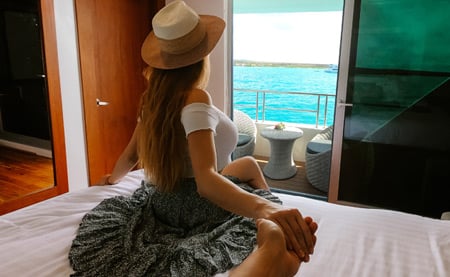The history of Galapagos is unique and intriguing: from geological chaos that created the islands, to the whalers and pirates that decimated the tortoise population to the creation of the Galapagos National Park in 1959. But what does the future hold for the Enchanted Islands?
Looking at the trends of today, we can try to guess what the Galapagos Islands will be like years and decades from now.
Galapagos Warbler Improved Conservation of Plants and Animals
Many animal populations faring better than they have been for years. In the 1960s, there were fewer than 15 Española Giant Tortoises in the world; now, there are thousands.
Project Floreana is ambitiously targeting this island as one of the most damaged islands in terms of introduced species: the nearly-extinct Floreana Mockingbird should soon thrive once again.
Scientists, park rangers and conservationists work diligently to protect such vulnerable species, and have made spectacular strides.
Increased Eradication of Invasive Species
Hundreds of years ago, introduced species such as:
- Rats
- Mice
- Cats
- Some insects, more invaded the archipelago, damaging the islands
- Goats were thought to be so numerous and adaptable and reproduced so quickly that no one envisioned their eradication.
Today, however, goats have been exterminated from several islands and a goat-free Galapagos seems to be on the horizon. Researchers and rangers aim to eliminate invasive species one by one, to return the islands to their original state.
More Involvement by Islanders
Eco LearningFor decades, the people of Galapagos sat by while tour companies based in Quito and Guayaquil ran most of the tourism businesses in the islands.
That’s changing, as the “Galapagueños” take more interest in the management of their affairs. More and more islanders are becoming guides, opening restaurants and hotels and participating in business activities there.

Improved Park Management
Galapagos Islands: Charles Darwin StationThe Galapagos National Park recently made a drastic change, putting all tourism cruises on a 15-day cycle instead of an 8-day cycle.
What’s the difference? Ships can visit sites once per two weeks, thereby cutting in half the ecological impact of tourists. Conservationists had been pushing for this change, which is designed to help the islands and the wildlife.
The park service is taking the protection of the fragile Galapagos ecosystem very seriously, and we can look forward to similar changes in the future.





No responses yet